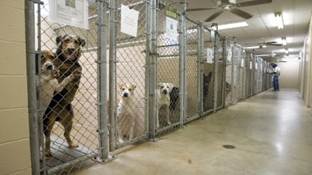
Debra Mims
Saint Leo University Campus, USA
Title: Paws on parole programs: Inmates’ perceptions and the impact on the community
Biography
Biography: Debra Mims
Abstract
The purpose of this qualitative study was to explore the perceptions of prison inmates participating in Paws on Parole program. The Paws on Parole program involves incarcerated inmates training local humane shelter canines’ obedience training techniques using the canine good citizen model during an 8 week program. Using secondary data from self-report questionnaires completed by the inmates, this study sought to explore how the inmates felt before and after their exposure to the Paws on Parole program. Specifically, this research seeks to better understand how the Paws on Parole program is perceived as helpful by the inmates in helping them to cope with prison life and their overall personal well-being. Once the dogs have been trained they are distributed into the community in a variety of modalities; from companion dogs, to therapy and service dogs. For years, animals have been used with great benefit in the treatment of the aged and the terminally ill and as service dogs to the infirmed. Animal assisted therapy is thought to be a useful tool for children with mental and physical difficulties; helping to promote a general emotional well-being, aiding in fine motor skills and balance and assisting with both educational and motivational purposes by encouraging long or short-term memory, increasing vocabulary and improving a person’s interaction and involvements with others. Animal therapy is also making strides in the treatment of Post-Traumatic Stress Disorder (PTSD). Animal Assisted Therapy in the treatment of PTSD patients has seen significant results.

Prisons and juvenile detention centers
References:
Aaron, M. (2012). The pathways of problematic sexual behavior: A literature review of factors affecting adult sexual behavior in survivors of childhood sexual abuse. Sexual Addiction & Compulsivity: The Journal of Treatment & Prevention, 19(3), 199–21. doi:10.1080/10720162.2012.690678
Abbe, A., & Brandon, S. (2014). Building and maintaining rapport in investigative interviews. Police Practice and Research: An International Journal, 15(3), 207-220. doi:10.1080/15614263.2013.827835
Alaggia, R. (2010). An ecological analysis of child sexual abuse disclosure: Considerations for child and adolescents mental health. Journal of the Canadian Academy of Child and Adolescent Psychiatry, 19(1), 32-39. Retrieved from http://www.cacap-acpea.org/en/cacap/Journal_p828.html
American Pet Products Association. (2012). 2011/2012 national pet owners survey. Greenwich, CT: Author.
American Psychiatric Association. (2014). Child sexual abuse what parents should know. Washington, DC: Author. Retrieved from http://www.apa.org/pi/families /resources/child-sexual-abuse.aspx
American Veterinary Medical Association. (2012). U.S. pet ownership & demographics sourcebook. Schaumburg, IL: Author.
